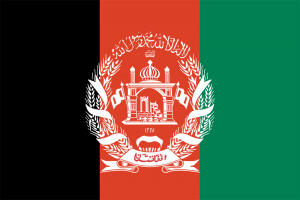Language/Central-pashto/Culture/Traditional-Clothing
Introduction
Pashtuns have a rich cultural heritage that encompasses various aspects of their daily lives, such as their cuisine, music, and clothing. Pashtun clothing is very distinctive and is often identified by its intricate designs and bright colors. In this lesson, we will learn about traditional Pashtun clothing, its history, and its significance in Pashtun culture. We will also understand the different types of clothing worn by men and women.
Men's Clothing
Pashtun men's clothing consists of a few basic items that are worn in traditional settings. These items are:
- Khet partug: a long shirt with wide sleeves that is often worn over a lungi.
- Lungi: a long piece of cloth that is wrapped around the waist and goes down to the feet. It is often worn underneath the khet partug.
- Pakol: a round-topped hat that is made out of wool and is often worn in colder weather.
- Chappal: a traditional slipper that is made out of leather or rubber.
Pashtun men also wear a shalwar kameez, which is a more modern version of traditional Pashtun clothing. It consists of a long shirt (kameez) and loose-fitting pants (shalwar). The shalwar kameez is popular not only in Pashtun culture, but throughout South Asia.
Women's Clothing
Pashtun women's clothing is very colorful and includes several layers of clothing. The following items are commonly worn by Pashtun women:
- Kameez: a long shirt that goes down to the ankles. It is often brightly colored and is worn over the other clothing items.
- Shalwar: loose-fitting pants that go down to the ankles. They are often made out of cotton or silk.
- Chador: a long piece of cloth that is wrapped around the head and body. It is often embroidered and is worn over the kameez and shalwar.
- Dupatta: a scarf that is worn over the head and shoulders. It is often brightly colored and is used to cover the head when entering a mosque or other religious building.
- Kanjaray: traditional Pashtun shoes that are made out of leather or rubber.
Pashtun women also wear a more modern version of traditional Pashtun clothing, which is called the Afghan dress. It consists of a long dress that is often brightly colored and intricately designed. The Afghan dress is becoming more popular in Pashtun culture as women seek to embrace their cultural heritage through fashion.
History and Significance
Traditional Pashtun clothing has a rich history and is steeped in symbolism and meaning. The colors and designs of the clothing are often used to identify a person's tribe or social status. For example, the Yusufzai tribe often wears a khet partug that is white with black stripes, while the Khattak tribe wears a khet partug that is blue with black stripes.
The dupatta worn by Pashtun women is also very significant. It symbolizes a woman's modesty and is often used to cover the head and face when in public. In more conservative parts of Pashtun culture, it is considered inappropriate for a woman to leave her house without covering her head and face with a dupatta or chador.
Conclusion
Pashtun clothing is an important part of Pashtun culture and is steeped in history and tradition. By learning about traditional Pashtun clothing, we can gain a deeper understanding of Pashtun culture and the values that are important to the Pashtun people.
Related Lessons

